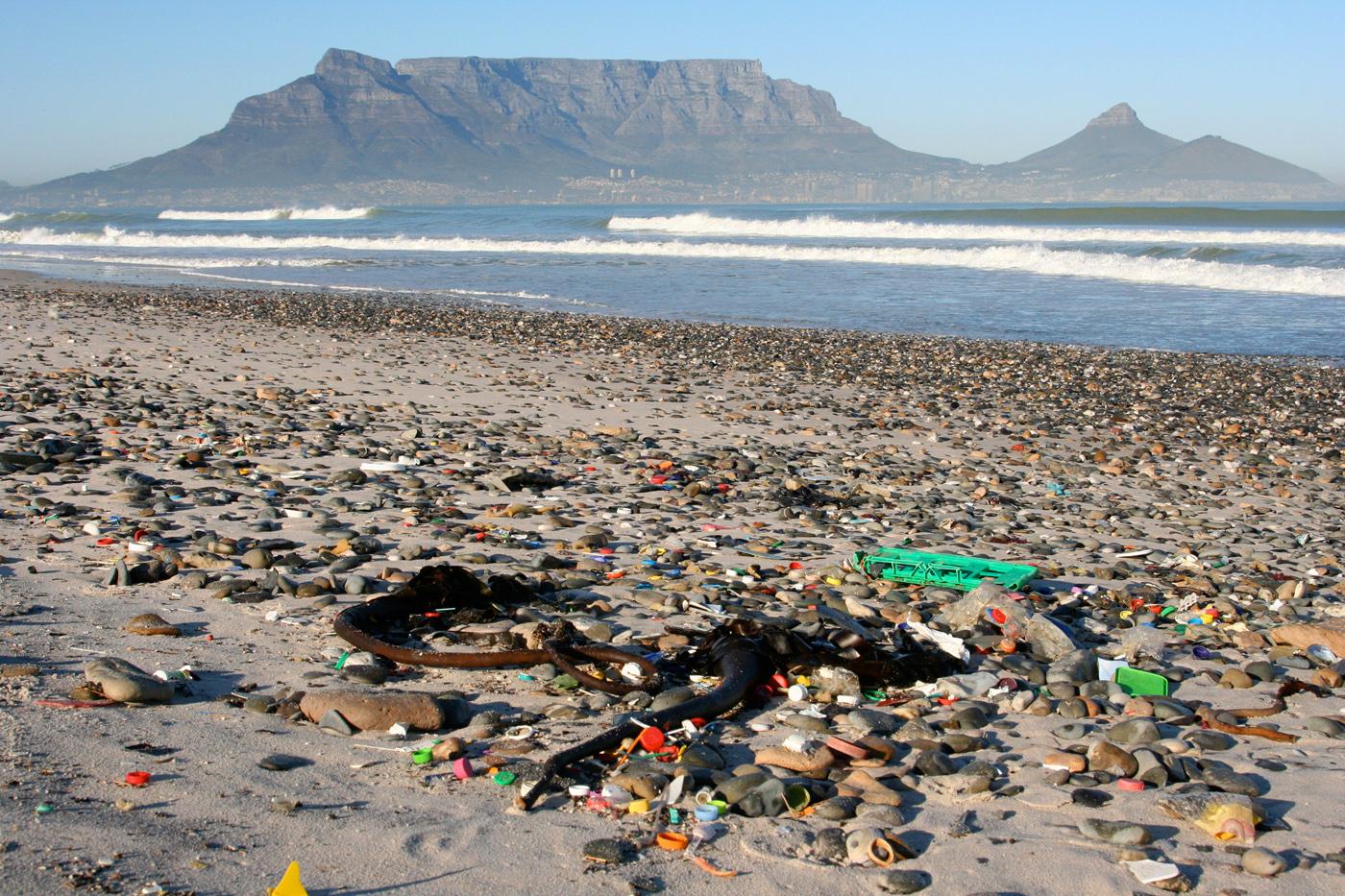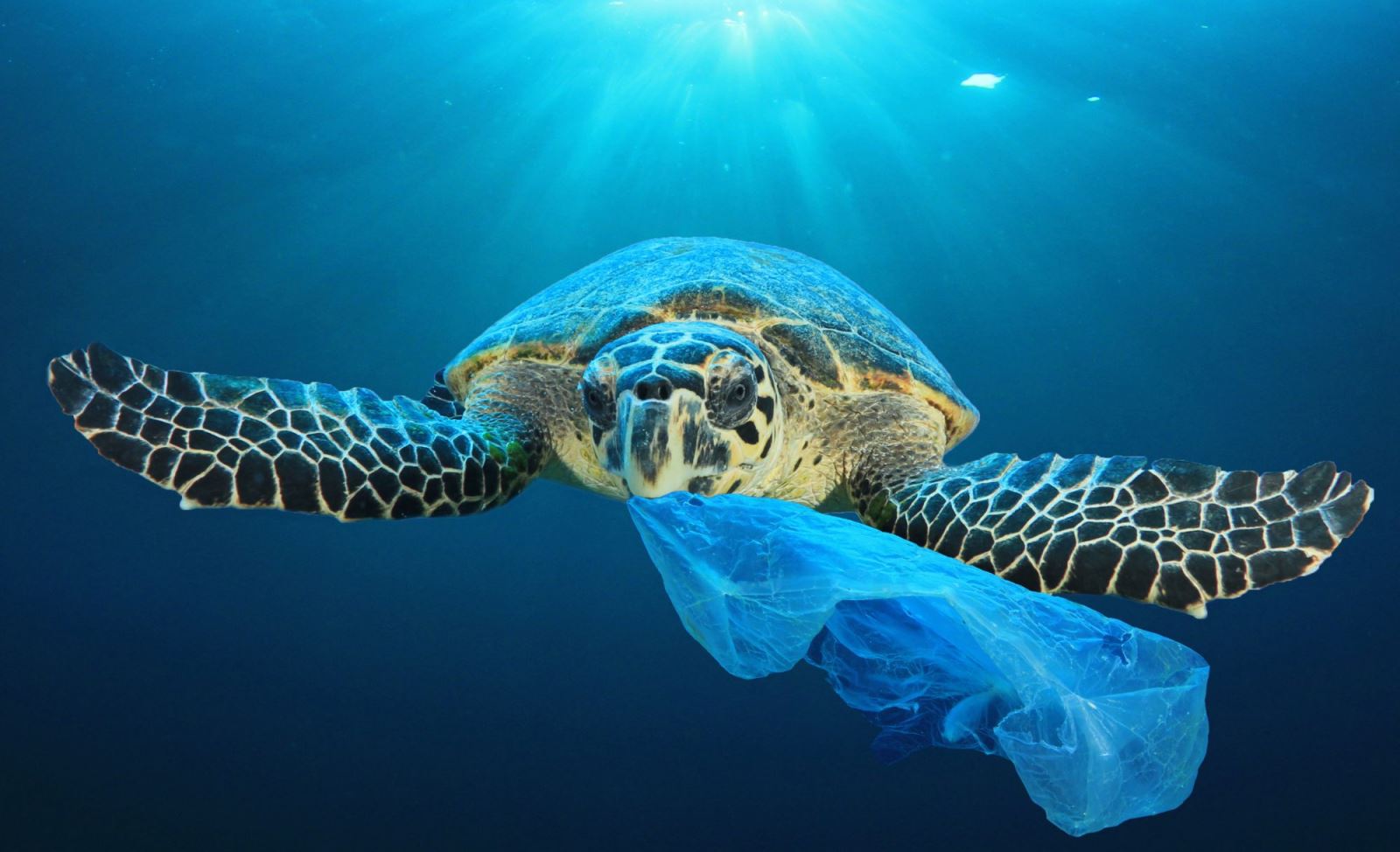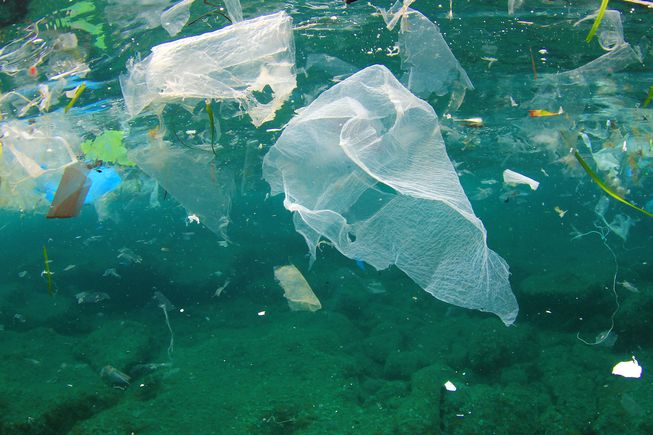Convenience comes at a great cost. Since human beings started using plastic, life has become so much easier; the inconvenience of having to wash dishes, bottles, etc. has almost disappeared. A culture of use and throw-away has emerged; as the population increases, plastic usage also increases. As a result, plastic has accumulated and flooded our world, unleashing a monster that is suffocating Earth.
Before plunging into discussing plastic waste, let us take a look at how plastics have invaded our world. The word “plastic” means flexible items that can take any shape or form; nowadays, it is used to identify items made of polymers. Cellulose, found in plants, is a natural polymer; human beings have come up with a way to make synthetic polymers. These are created using chains of atoms that are lengthy and of repeated patterns, which make plastic what it is: flexible and lightweight. Unlike natural polymers, synthetic polymers are made of petroleum and other fossil fuels.
The first fully synthetic polymer, created without any natural substances, was invented in 1907 by Leo Baekeland. It was, however, preceded, by the first synthetic polymer invented by John Wesley Hyatt using natural substances such as camphor and cellulose in 1869. Hyatt’s purpose was to create a substitute for ivory, which was being used in the highly popular billiards game at the time and resulted in the slaughter of elephants. He had the best intentions at heart.
By creating plastic, humanity went out of the frying pan into the fire. Plastic became the new sensation; it has since made more and more items cheap and available that otherwise would not have been so due to the scarcity of natural resources. Plastic has spread, replacing “steel in cars, and paper and glass in packaging” as author Susan Freinkel describes.
So, why is plastic so problematic? The simple answer is that plastic does not biodegrade; unlike natural substances, it lasts for a long time because it is made of chemicals that the bacteria, which cause decay, do not recognize. In other words, nature does not make it, so nature does not take it back; this results in piles of plastic buried in land and oceans.

An area in the Pacific Ocean is known as the Great Pacific Garbage Patch, so how does plastic end up in that area? Plastic waste enters the ocean from the rivers; they travel long distances until they reach strong currents, the gyre of the Pacific Ocean, where plastic waste gets stuck, accumulating and creating a patch of plastic that does not disappear. This patch has increased over the years, and estimates suggest that it is now three times the size of France; the Washington Post has published that, by 2050, plastic will outweigh fish in the ocean.
Plastic waste needs our full attention before it is too late; but, what can we do? Raising awareness is the number one priority; we cannot solve a problem unless we are aware of all its dimensions. Among other examples of awareness-raising initiatives, BBC has launched Plastics Watch – Plastics Action to raise awareness and recommend solutions as to how to reduce using plastic by using more environment-friendly items.
So, what can we do? Let us explore together the little things we can do to save our planet from plastic. We can opt, whenever possible, for environment–friendly items that we can use repeatedly and dispose of safely at the end. For example, we can carry cloth bags instead of plastic bags when we go shopping. We can also replace regular toothbrushes with bamboo toothbrushes, and use reusable bottles instead of one-use plastic bottles. For clothes hangers, we can opt for steel instead of plastic. Bring your own silver re-usable cutlery instead of using plastic cutlery and planet Earth will thank you for it.
The items listed before are all known items; however, plastic can also be found in unlikely items. If we want to help the environment, we should also give up “gum”. Yes, that seemingly innocent item is not environment-friendly because it is made of “synthetic rubber”, also known as “plastic”. Do not buy frozen foods and opt for fresh food items because frozen foods are packed in plastic. While saving the environment, you will also be saving yourself as you will be eating non-processed food.
The list can go on and on. Plastic is literally everywhere; you name it and you will find it, but this must stop. It is convenient, but it is unhealthy and until we find a proper way to dispose of plastic, we should limit our use of it; it is hard but it is doable. Not only should we opt for plastic alternatives “when available”, but we must also pressure manufacturers to use, even develop when necessary, environment-friendly alternatives to one-use plastic items and packaging.
Nothing about using less plastic is difficult; it is breaking our habit of using and throwing away plastic that is difficult. With minimum changes, you can eliminate plastic or you can even minimize the use of plastic. There are tons of plastic toothbrushes out there in the ocean, and tons more of plastic bags and bottles that need our immediate attention, and until we know a way to dispose of them safely, we have to minimize our usage.

Inside the oceans is where the problem of plastic waste is more noticeable. BBC published an online article about a sperm whale that was found dead with 6 kg of plastic waste—including drinking cups, plastic bags, and flip flops—inside its stomach. Not only whales, but all marine life is suffocating, because the oceans are filled with plastic. Sea turtles mistake transparent plastic bags for jelly fish and eat them because jelly fish is what they normally eat.
Aside from the effect of plastic on marine life, when we eat fish, we eat plastic as well, because plastic micro-particles have been found in the flesh of the fish we eat. Moreover, plastic fibers have found their way into tap water. This means that, if you are drinking water from the tap, you are probably drinking plastic with it. Scientists are not sure how plastic fibers got there, but what is obvious is that as long as plastic affects other creatures, then definitely it would affect us as well. We are not immune to the plastic plague. We are part of the environment; “what goes around comes around” is a saying that has proven itself correct when it comes to plastic waste.

So, will plastic just stay there in the ocean forever? We certainly hope not. A tiny ray of hope emerged when a group of scientists “accidently” created an enzyme that breaks plastic into smaller chunks. This might help, but it will probably take a long time before these enzymes are efficiently applied to the plastic recycling process. Plastic has made our lives easy, but gradually all this will change as plastic accumulates in the ocean and on land. We have a long way to go, but with enough awareness, recommendations, and solutions, we can defeat the monster. For ideas about how you can help the environment and reduce plastic, check BBC’s Plastic Waste - Plastics Action. We bring about change when we take little steps together.
References
livescience.com
bbc.co.uk
theoceancleanup.com
washingtonpost.com
theguardian.com
arabic.rt.com
independent.co.uk
onegreenplanet.org
theguardian.com
independent.co.uk
greeneducationfoundation.org
This article was first published in print in SCIplanet, Winter 2019 Issue.